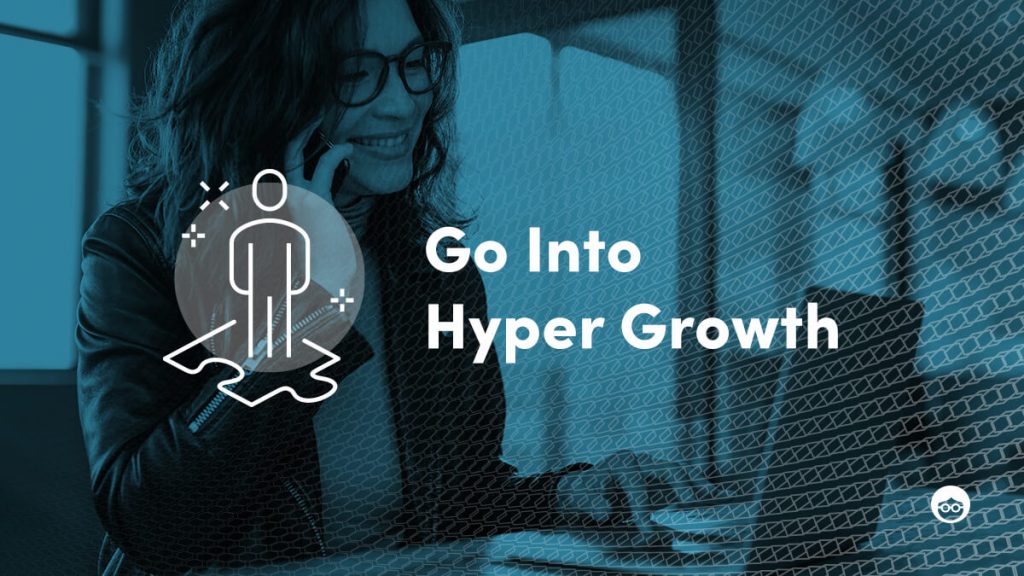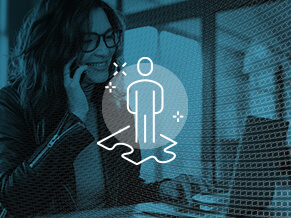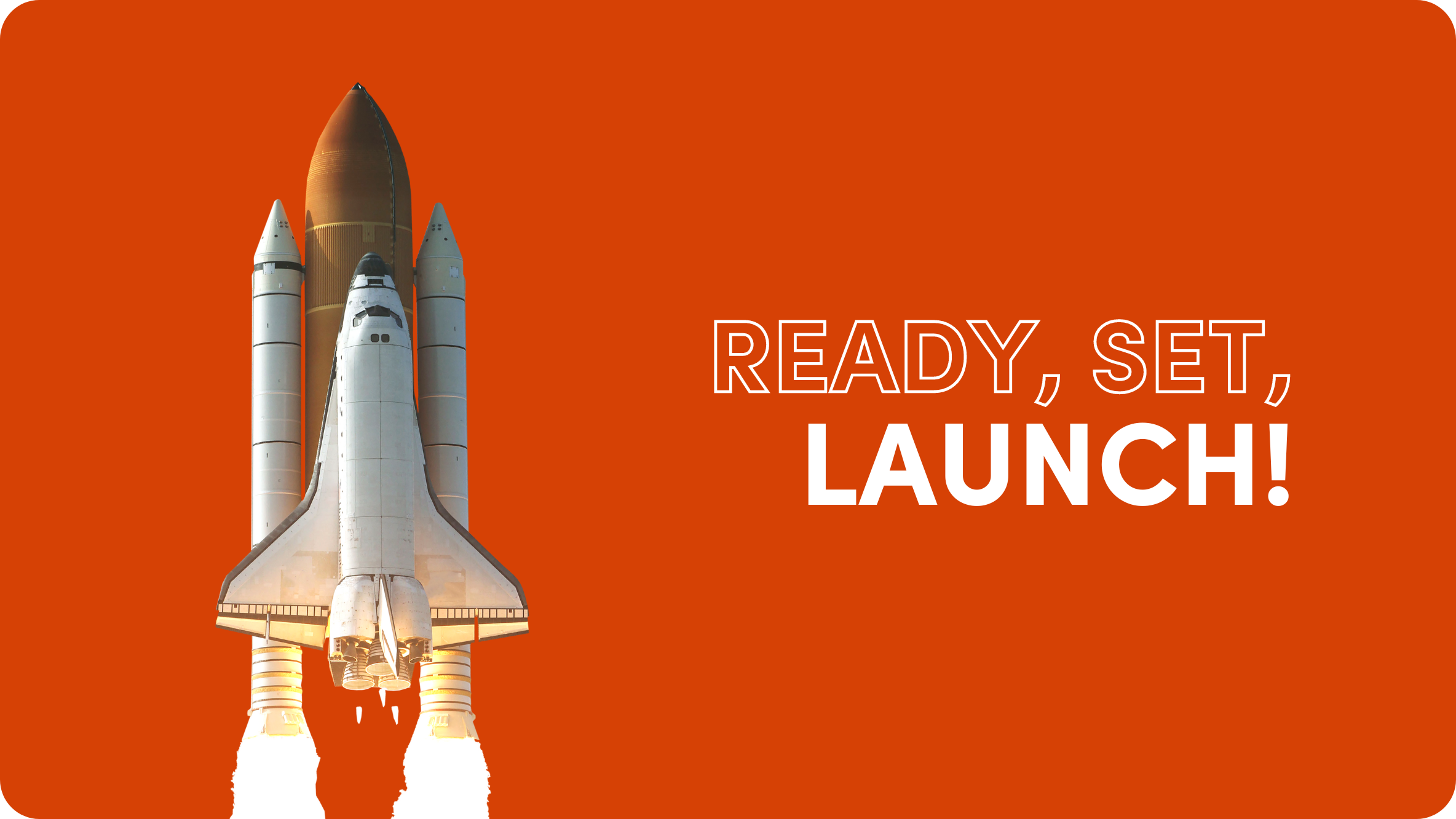How to Use B2B Hyper Personalization to Increase Growth

Attracting new customers and increasing conversions is always a challenge for business owners. If you’ve been seeking ways to grow your business, you might have encountered the words “growth hacking”. What exactly is “growth hacking” and how is it different from other marketing strategies?
Growth hacking is more complicated than you think. It refers to a specific set of marketing practices that help businesses reach the top of their niche and maximize revenue. If you want to know more about growth hacking and how you can apply hyper-personalization – one of my favorite growth hacks – to your B2B marketing, keep reading.
What is Growth Hacking and Why Does it Matter?
In its simplest form, growth hacking is a system of marketing strategies and tactics that focus on driving business growth. That might mean attracting more customers and driving more sales.
But growth hacks also seek to attract the kinds of customers who will stick around, remain loyal, and make more frequent purchases. In other words, growth hacking practices are designed to increase the customer lifetime value. It seeks to attract not just quantity, but also quality.
Thanks to increasingly fierce competition across industries, the importance of growth hacking has never been more pronounced. Brands are turning to advanced techniques, such as hyper-personalized marketing, to keep flourishing. Read on to discover how you can use hyper-personalization to gain not just more clients, but a better quality of client.
What is Hyper-Personalization?
Personalized content used to be a marketing novelty. Now, both customers and marketers see it as a must-have. Around 84% of consumers demand that brands communicate to them on a personal level, while marketers are starting to tap into personalization’s full potential for fulfilling customer needs and driving sales. 75% of marketers consider dynamic, personalized content across channels as very important.
This means your business needs to personalize each customer touchpoint. For instance, if you run an online course, the personalization should start the moment the customer becomes aware of your course offering, continue when they click on “Sign Up”, and remain strong even after they’ve taken the class. Another common example we see is marketers using their email marketing platforms to segment customers and target specific segments according to demographics or behavioral data.
Behavioral Segmentation is a key component of effective eCommerce strategies and identifies how your customer interacts with your business. First you divide customer into segments depending on their behaviors when interacting with your business :
- Their attitude toward your product, brand or service;
- Their use of your product or service,
- Their overall knowledge of your brand and your brand’s products,
- Their purchasing tendencies, such as buying on special occasions like birthdays or holidays only, etc.
(Source)
Then you personalize the complete sales funnel to their needs. This strategy is called hyper-personalization, and it works by using customer data and the creative application of technology to deliver content that speaks the customer’s language and addresses their needs in B2C eCommerce communication, email outreach or even in B2B through personalized LinkedIn Outreach.
Why Does Hyper-Personalization Work?
Hyper-personalization takes personalized marketing to the next level. It is far more detailed and looks at a lot more data points than the basic forms of personalization you may be used to. Hyper-personalization takes user data, analyzes it in detail, and bases all customer touch-points on it
Think of it a bit like your favorite neighborhood mom-and-pop store where the owners know not just your name, but remember your order and ask about your family each time you visit.
Hyper-personalization in B2B marketing is a bit like the digital equivalent of that relationship. You need to get to know your customers, clients, and prospects on a deeper level so that you can deliver targeted solutions and personal service every single time you interact with them.
At its core, it’s all about caring about your customers so much that you commit yourself to gathering as much information as you can, allowing you to detect patterns in your behavior and deliver the appropriate response for every kind of situation
The only difference between the local store and your online business is that you have the technology to automate your data collection, data analysis, and marketing. Hyper-personalization does not just let you retain your existing customers’ loyalty. It also helps you reach new customers and increase their customer lifetime value.
Hyper-Personalized Email Marketing
One of the first things you must hyper-personalize as you do B2B growth hacking is your email marketing. All robust email marketing solutions offer segmentation and automation features, some more advanced than others. Whenever a new business reaches out or a user subscribes to your email newsletter, your CRM and email marketing system can easily segment them according to relevant demographics.
The factors you’ll focus on depend on what makes sense for your product or service. You can set up your email marketing tool to segment customers according to, for example, industry, company size, company age, or geographical location. Analyzing these factors will help ensure that you send content that’s relevant to them, which will reinforce your credibility and show that you care about them and are considering their needs.
You can also segment your customers according to behavior. For example, did they find your site through a specific Google search or via a social media ad? What led them to your site can yield valuable data about their needs, motivations, and the problem they’re trying to solve. For example, if they found you through a Google search for “cloud-based CRM software”, you can send them relevant content and solutions to meet that search intent.
Email marketing automation is one of the most important tools you’ll ever have at your disposal. Wherever your leads may be in the sales funnel, sending hyper-personalized email marketing content will help you with lead qualification. And you convince them that you’re always looking for new ways to help their business.
As you get to know your prospects and they move along your sales funnel, you can up your efforts even more.
Personalized Videos
Besides images, you can also use personalized videos. Video has been accelerated by covid-19 and the workforce going online.
This allows you to provide value without the need for a hard sell. Effective sales strategies require a real human connection – nobody wants to make a deal with a robot! This is even more true in today’s world of remote work. Even though we’re talking about B2B sales, that personal touch still matters.
You can build solid connections with your prospects with video. Stand out by creating personalised videos that show your prospects how much you care. There are numerous tools and apps on the market that will allow you to record a video in no time on your mobile phone, personalize it, and share it with your prospects. I personally use BigVu on my Iphone.
As I am not so confident with recording videos, it helps me recording videos with their built-in teleprompter. It’s showing the text in the screen below your camera, so you keep your eyes on the camera.
(Source)
Here’s the process in a nutshell:
- Write your script
- Use a teleprompter app to record your video
I use the free BIGVU App - Create a video landing page
- Use the landing page in your outreach. A great way to do this is to use the subject line “Hey [FirstName], I created a video for you!”
This method can quickly build trust with new leads and stand out from the competition. People love this individual approach and I get much more replies and start conversations that lead directly to conversions and sales.
This is what my video landing page looks like:
Hyper-Personalized Remarketing
Whenever a user closes a browser window without taking the desired action, you may think their customer journey has ended before it has really begun. However, this is just the start – if you know how to do remarketing properly. Remarketing is built around the fact that most customers don’t convert during their first visit to a website and may need a few reminders before making a purchase. This is particularly true in B2B marketing, where average order values tend to be high and decisions may need to go through multiple levels for approval.
A hyper-personalized remarketing strategy will target prospects based on what they were doing before they closed the window. For example, if you sell physical products, you might send a certain set of email ads to customers who added items to their shopping cart but didn’t proceed to checkout. You might target a different set of communications towards prospects who looked at pricing for your solution but did not get in touch with your sales team for a consultation. And so on.
The beauty of email automation is that once things are set up, it takes very little effort to retarget would-be customers who’ve dropped out of the funnel for one reason or another. All you need to do is create your content, set your parameters to trigger them, then stand back as your campaign works its magic.
There are also multiple social media platforms you can use for your remarketing campaign, most notably Facebook and LinkedIn. These allow you to retarget users for whom you do not have an email address, such as first-time site visitors. You’ll need to add a small piece of code called a tracking pixel to your site, choose the behavioral parameters you’d like to target, and set a budget:
Source: LinkedIn
One way to hyper-personalize remarketing is to set your remarketing ads to trigger based on specific URL visits. Here’s an example from Leadpages:
This ad is targeted at people who viewed a specific webpage, making it highly relevant to the interests, needs, and behaviors of those who will see it.
Hyper-Personalized Images & GIFs
A common approach in email marketing is using emojis to humanize the automated sales process. What’s working far better in sales automation, is image personalization.
Humans process images a lot faster than we process written content, and when we personalize images, they never fail to grab a viewer’s attention. Images and GIFs are an integral part of a successful outreach strategy for B2B marketers and can be used across various communication mediums.
Hyper-personalized images trigger pattern interrupts in your sales process, jolting the recipient out of their usual routine. This disruptive response typically doubles the conversion rate of non-image campaigns and can increase cold email signups by around 500%.
For example, a Facebook retargeting campaign for leads who visited your website could include your company logo and their profile photos. This has the effect of putting your business and the lead together, leading them to imagine themselves using your products or collaborating with your business. You could also send an email containing an event invite with their name on it, like Allman Consulting did in this example:
If hyper-personalized images ramp up your conversion rates, GIFs send them into overdrive. Social media posts containing GIFs result in 10% more engagement for B2B companies, while tweets with GIFs get up to 1.6 times more clicks than those with static images for both B2C and B2B campaigns. As long as you maintain a professional tone in your campaign, GIFs will help improve your results.
Here are some tips for effective hyper-personalized static-image and GIF campaigns:
- Get to know your prospect and include something that they can relate to. For example, if your prospect is a big Michael Jordan fan, you might use a GIF from The Last Dance.
- Don’t be afraid to use humor. However, remember to keep it clean and safe for work. Everyone likes to laugh, and humor is under-utilized in B2B marketing.
- Make the content all about the prospect, not your brand. If you address your prospects’ unique needs and pain points, they will be more likely to engage with you.
A hyper-personalized static image or GIF will help you grab your leads’ attention and keep their eyes on your brand. The earlier you use hyper-personalized images or GIFs in your email outreach or with your preferred social media tools, the better your chances of closing the sale.
Wrapping Up
If you want to increase customer engagement, grow customer lifetime value, and close more sales, it’s time for you to start looking at growth hacks. Hyper-personalization is one of my favorite growth hacking strategies and can produce extraordinary results that will propel you towards your business goals.
Hyper-personalization involves taking customer data and behavior, and analyzing it to come up with targeted content that addresses customer needs in real time. In other words, it proves to your prospective customers that you care about them as individuals and recognize their unique needs and pain points.
You can apply hyper-personalization to many different kinds of campaigns and content. If you do it will, you’ll enjoy a better audience response, higher conversion rates, and more recovered and recurring revenue. If you haven’t started hyper-personalizing your marketing campaigns, you must start now.
Hyper-personalization is not a one-time thing, either. It takes time and effort to get it right, just like developing a real relationship with your customers takes time. But before you know it, you will start seeing a more engaged audience that appreciates the effort you put into hyper-personalizing the content you send them. The best of luck with your campaigns!













